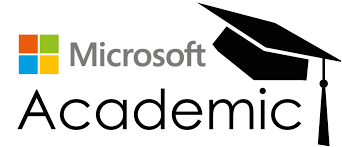PEMBELAJARAN KIMIA UNSUR MENGGUNAKAN KONTEKS KEUNGGULAN LOKAL TAMBANG TIMAH DI PULAU BANGKA DAN PENGARUHNYA PADA LITERASI SAINS SISWA SMA KELAS XII
Abstract
ABSTRAK
Penelitian ini bertujuan untuk mengembangkan pembelajaran kontekstual berbasis masalah menggunakan konteks keunggulan lokal tambang timah di Bangka pada materi kimia unsur, serta pengaruhnya terhadap literasi sains pada aspek konten, konteks aplikasi, proses, dan sikap sains siswa SMA. Metode yang digunakan dalam penelitian ini adalah kuasi eksperimen dengan “one group pretest-posttest design”. Subyek penelitian adalah 29 orang siswa kelas XII dari salah satu SMA di Kabupaten Bangka Tengah. Pengumpulan data dilakukan melalui tes pilihan ganda untuk mengukur kemampuan literasi sains siswa. Selain itu, penyebaran angket, lembar observasi, dan LKS juga dilakukan untuk mengukur keterlaksanaan pembelajaran. Hasil pengumpulan data tes selanjutnya dihitung dan dianalisis berdasarkan nilai N-Gain (%), sedangkan data non tes dianalisis secara deskriptif. Hasil penelitian menunjukkan secara keseluruhan pembelajaran dapat meningkatkan literasi sains siswa dengan N-Gain (%) sebesar 59,72% (kategori sedang), begitu juga pada tiap aspek literasi sains pada aspek konten (60,97%), aspek konteks aplikasi (58,83%), aspek proses (63,49%) dan aspek sikap (62,65%), yang mengalami peningkatan pada kategori sedang. Secara umum siswa memberikan tanggapan positif terhadap pembelajaran kontekstual berbasis masalah.
ABSTRACT
This study was aimed to develop a contextual problem based learning based on local excellence context (tin mining in Bangka) for chemistry of elements topics, to enhance scientific literacy (content, context applications, processes, and science attitudes aspects) of senior high school students. Method used in this study was quasi-experimental with one group pretest-posttest design. Subjects of the study were 29 class XII students at one of high schools in Bangka Tengah Regency. Data collection was conducted through multiple choice test to measure students' scientific literacy skills. Furthermore, questionnaires, observation sheets, and students working sheets were also used to measure learning implementation. The collected data were calculated and analyzed based on N-Gain (%) value, while non-test data were analyzed descriptively. The results showed that in overall, this learning can improve students' science literacy with N-Gain (%) of 59.72% (medium category), as well as in every aspect of scientific literacy such as content aspects (60.97%), application context aspects (58.83%), process aspects (63.49%) and attitude aspects (62.65%), which were increased to medium category. Students generally respond positively toward contextual problem based learning.
Keywords
Full Text:
PDFReferences
Arends, R. (2008). Learning to Teach: Belajar untuk Mengajar. Yogyakarta: Pustaka Pelajar.
BSNP. (2007). Standar Proses. Jakarta: BSNP
Dahar, R.W. (1996). Teori-teori Belajar. Jakarta: Erlangga.
Depdiknas, (2006). Peraturan Menteri Pendidikan Nasional No. 22 Tahun 2006 Tentang Standar Isi. Jakarta: Depdiknas.
Firman, H. (1991). Penilaian Hasil Belajar Dalam Pembelajaran Kimia. Bandung: Jurusan Pendidikan Kimia IKIP Bandung.
Hayat, B dan Yusuf, S. (2010). Mutu Pendidikan. Jakarta: Bumi Aksara.
Holbrook, J. (2005). Making Chemistry Teaching Relevant. Chemical Education International, 6(1).
Holbrook, J. (1998). Operationalising Scientific and Technological Literacy - a newapproach to science teaching. Science Education International, 9(2).
Hovstein. A,and Kesner, M. (2006). Industrial Chemistry and School. Chemistry: Making Chemistry Studies More Relevant. International Journal of Science Education, 28(9). Israel: The Weizmann Institute of Science
Mudzakir, A. (2005). Chemie im Kontext (Konsepsi Inovatif Pembelajaran Kimia di Jerman). Makalah pada Seminar Nasional Pendidikan Kimia. Bandung: UPI
Mudzakir & Muharram (2006). Pembelajaran Kontekstual Berbasis masalah untuk Meningkatkan Relevansi Pengajaran. Seminar Nasional Pendidikan Kimia. Bandung
Nentwig, et al. (2002). “Chemie im Context-From Situated Learning in Relevant Contexts to a Systematic International of Basic Chemical Concept”. Makalah Simposium Internasional IPN-UYSEG-oktober 2002, Kiel Jerman
OECD (2009). PISA 2009 Results: Learning Trends changes in student performance since 2000 (Volume V). [Online]. Diakses dari: http//www.oecd.org/dataoecd/pisa_2009_5.pdf [16 Februari 2012].
Parchmann & Schmidt. (2005). Students´ Pre-conceptions as a tool to Reflect and to Design Teaching and Learning - a study from the project Chemie im Kontext. Universität Oldenburg Didaktik der Chemie,Germany
Shwartz et al. (2006). The use of Scientific Literacy Taxonomy for Assessing thr Development of Chemical Literacy Among High-school Student. Journal of chemistry education research and practice: 7(4), 203-225.
Sudjana, N. (2006). Penilaian Hasil Proses Belajar Mengajar. Bandung: Remaja Rosdakarya.
Sujana, M (2009). Pembelajaran Kontekstual Berbasis Karyawisata Untuk Meningkatkan Hasil Belajar siswa pada Topik Unsur-unsur Logam dalam Kehidupan Sehari-hari. (Tesis). Sekolah Pascasarjana UPI, Bandung.
Wittie, D & Beers, K. (2003). Testing of Chemical Literacy (Chemistry in Context in The Dutch National Examinations). Chemical Education International, 4(1).
DOI: https://doi.org/10.18269/jpmipa.v19i2.36186
Refbacks
- There are currently no refbacks.
Copyright (c) 2021 Jurnal Pengajaran MIPA

This work is licensed under a Creative Commons Attribution-ShareAlike 4.0 International License.
JPMIPA http://ejournal.upi.edu/index.php/jpmipa/index is licensed under a Creative Commons Attribution-ShareAlike 4.0 International License
Jurnal Pengajaran Matematika dan Ilmu Pengetahuan Alam (JPMIPA) or Journal of Mathematics and Science Teaching
All rights reserverd. pISSN 1412-0917 eISSN 2443-3616
Copyright © Faculty of Mathematics and Science Education (FPMIPA) Universitas Pendidikan Indonesia (UPI)
183,211 View JPMIPA Stats









